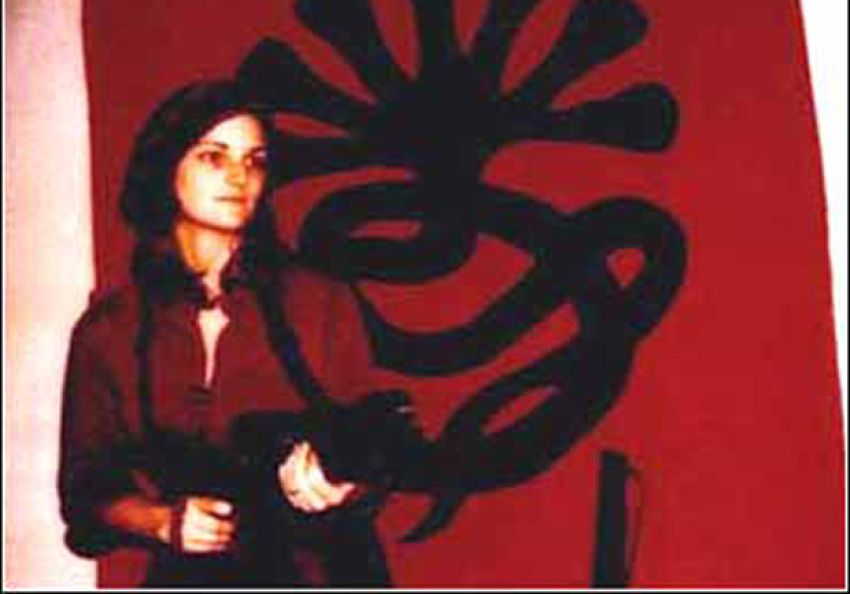
American Heiress: The Kidnapping, Crimes & Trial of Patty Hearst
Jeffrey Toobin
Profile Books, 2017, 371 pages
“Death to the fascist insect that preys upon the life of the people.” With this hyperbolic declaration by “General Field Marshall” Cinque M’tume (the nom-de-plume of a Black prison escapee), the Symbionese Liberation Army (SLA) introduced itself to the American people in the early 1970s.
It derived its mysterious name from contrasting the “symbiosis” of a harmonious socialist society to the “parasitism” of a capitalist elite.
The political catch-phrase, and the military pretension of its self-anointed leader, encapsulated the self-aggrandisement of the SLA. Its total membership never broke double figures but it acquired a brief outlaw celebrity with the 1974 kidnapping and ideological conversion of Patty Hearst. She was the heiress to the press empire founded by William Randolph Hearst, a name which “stood for economic royalty and political conservatism,” writes Jeffrey Toobin, New Yorker and CNN legal correspondent, in American Heiress: The Kidnapping, Crimes and Trial of Patty Hearst.
The SLA grew out of a prison reform movement by Californian university students. Political eclectics speaking a “pidgin leftist dialect”, they cut-and-pasted an incoherent ideological hodge-podge cobbled together from “Pan-Africanist solidarity movements, Cuban and South American Marxism, Maoism” and, predominantly, Latin American urban guerrilla movements.
Armed actions by a revolutionary, anti-capitalist elite against politically resonant targets would, according to the SLA “theoreticians”, ignite mass revolution.
When their assassination of the (Black) superintendent of schools in Oakland (for his policy of installing armed security guards in schools) sparked mass revulsion against the SLA instead, they switched to kidnapping “corporate enemies of the people”. They selected the 19-year-old Hearst.
In return for their daughter’s release, the SLA demanded the Hearst family fund free food giveaways to the poor. They invited various progressive groups to participate in the logistics of the food distribution, but most refused on principle. They recognised the exercise was the result of criminal extortion and not the triumph of political campaigning.
Enough, however, signed on to make the event a success and thus launder the SLA’s reputation.
An even bigger propaganda coup followed with Hearst’s recruitment to the SLA. Confined to a closet and blindfolded for eight weeks, she was talked at incessantly, eventually agreeing to join the group. Whether this was sincere or a result of duress remains unclear – Hearst’s failure to avail herself of escape opportunities suggests the former, her rapid reconversion after capture by the FBI hints at the latter.
With a sub-machine-gun-posing Hearst as their militant chic poster-girl, the cash-strapped SLA reverted to its trademark direct violence, including bank robberies and the pipe-bombing of police stations and patrol cars.
The SLA made a mockery of left politics. Every progressive cause and socialist principle got grotesquely bent out of shape when it passed through the SLA.
Women’s liberation, for example, degenerated into a celebration of a “feminist bomb” built by the women SLA members while their demand for women to lead the armed bank robberies resulted in fatalities. They kicked a pregnant female bank clerk who miscarried as a result, and shot dead a female bank customer. This killed was desperately rationalised by the SLA through the very unfeminist defining of a woman through her husband, a doctor, which apparently made her a “bourgeois pig”, too.
The SLA was always going to wind up as no more than a policing problem for the capitalist order, not a political challenge to it. The SLA was effectively wiped out in a shoot-out with an LAPD SWAT team.
Hearst was among the few survivors, however, and she turned state witness in return for a reduced sentence. Thanks to the “resources and connections of a Hearst”, this was reduced through presidential commutation (under Jimmy Carter) and then a presidential pardon (under Bill Clinton). She was reunited with her first and true love of privilege.
The SLA’s political dysfunction lay behind their swift fall. There were mitigating circumstances for its chosen path – establishment politics had been uglified through imperialist war rampages, the overthrow of other nations’ governments that were not to the liking of big capital, and the sometimes-brutal abuse of human rights at home. For violent and lawless, look no further than the services rendered for the American corporate class by the US capitalist state.
It is no surprise that some among the more politically primitive chose to respond in kind.
The “bullets and bombs” response of the SLA and similar terrorist groupuscles was not the only option, however. There was the much less glamorous but far more potent challenge to the dictatorship of capital through working class organising.
However, the SLA swapped all that seemingly dreary business about trade unions and the class struggle for the instant gratification of political banditry. As a result, it was never more than a minor bug in the capitalist system, a system that needs complete reprogramming.
That job will require a class act, not the amateur theatrics of the ideologically immature, politically impatient and fundamentally anti-democratic and elitist substitution of the actions of the elite few for the political heft and strike power of working people.
Although Toobin’s narrative-heavy prose rarely strays into meaty theoretical analysis, his story of the SLA demonstrates that “left-wing” terrorism is a political oxymoron.